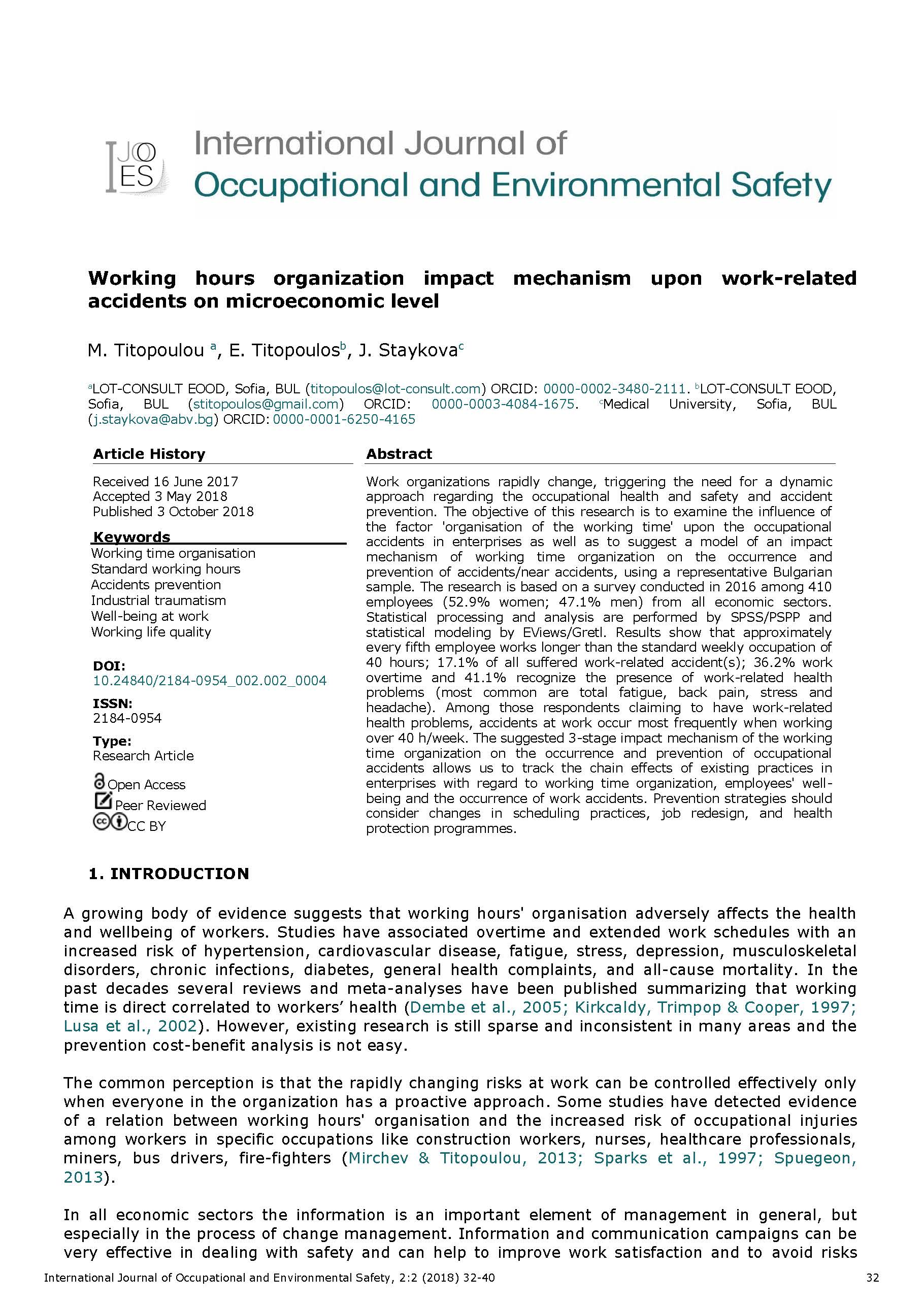Working hours organization impact mechanism upon work-related accidents on microeconomic level
Main Article Content
Abstract
Work organizations rapidly change, triggering the need for a dynamic approach regarding the occupational health and safety and accident prevention. The objective of this research is to examine the influence of the factor 'organisation of the working time' upon the occupational accidents in enterprises as well as to suggest a model of an impact mechanism of working time organization on the occurrence and prevention of accidents/near accidents, using a representative Bulgarian sample. The research is based on a survey conducted in 2016 among 410 employees (52.9% women; 47.1% men) from all economic sectors. Statistical processing and analysis are performed by SPSS/PSPP and statistical modeling by EViews/Gretl. Results show that approximately every fifth employee works longer than the standard weekly occupation of 40 hours; 17.1% of all suffered work-related accident(s); 36.2% work overtime and 41.1% recognize the presence of work-related health problems (most common are total fatigue, back pain, stress and headache). Among those respondents claiming to have work-related health problems, accidents at work occur most frequently when working over 40 h/week. The suggested 3-stage impact mechanism of the working time organization on the occurrence and prevention of occupational accidents allows us to track the chain effects of existing practices in enterprises with regard to working time organization, employees' well-being and the occurrence of work accidents. Prevention strategies should consider changes in scheduling practices, job redesign, and health protection programmes.

